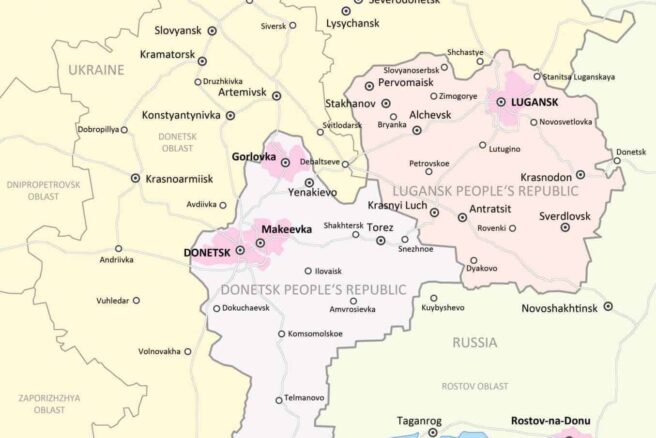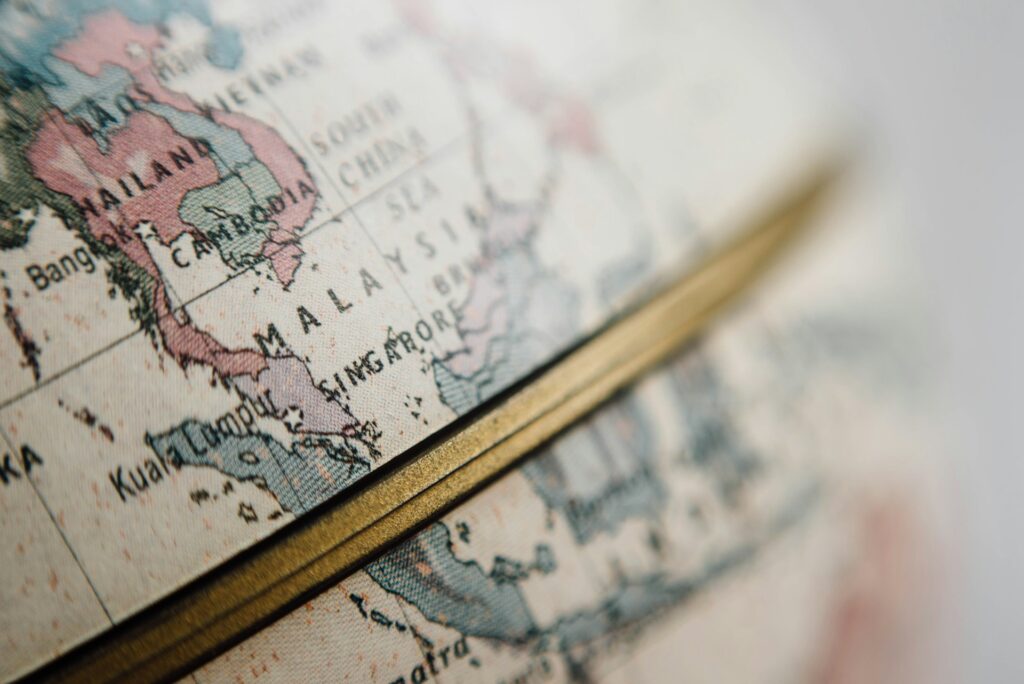If the conflict in eastern Ukraine can be solved non-militarily, there are four possible scenarios for the future: annexation of Donbass to the Russian Federation, Donbass declaring independence, reintegration of Donbass into Ukraine, and for the conflict to remain frozen.
The lose-lose armed conflict
The battles for Mariupol and Debaltsevo will play a vital role in the outcome of the conflict in eastern Ukraine. A separatist victory in the former will result in the gain of the Donetsk region’s second-largest city and the main port on the Azov Sea. A victory in the latter adds a strategic pocket of territory which would allow for the consolidation of the borders of the self-proclaimed Donetsk and Lugansk People’s Republics into a common frontline.
A Ukrainian victory on the other hand, while stopping the advancement of separatist forces, will more than likely just solidify the post-Soviet area’s latest, and most severe, frozen conflict.
The main question now is what happens next? It is impossible for Ukraine to win the war on its own while it is equally impossible for it to capitulate. In this case a victory is not to lose more territory than it has already lost.
It is also impossible for Russia to win the war without provoking a much wider conflict and facing much tougher repercussions than sanctions.
The US military involvement is starting to appear more likely, especially after the newly-appointed Secretary of Defense Ashton Carter said last week that he was “very much inclined” to send anti-tank missiles, small arms, and ammunition to Ukraine.
The US participation would increase regional tension, intensify fighting, and not even make a Ukrainian military victory more likely, due in part to the limited quantity and defensive nature of the weapons in question.
Washington knows it cannot confront Russia full on, just as Moscow knows it cannot do the same to Kiev, so a stalemate continues to save everyone’s face.
A non-military solution is the only feasible way of resolving the situation in eastern Ukraine without Europe descending into another prolonged Bosnia-type bloodbath. If indeed all sides decide that violence is not the answer, there are four possible scenarios for the resolution of the conflict.
Future scenarios
The first scenario is that Donbass is annexed to the Russian Federation. Taking on Donbass even in its pre-war state would require huge investment to update its mining and steel sectors. However, now the region also needs to be rebuilt after the war damage. Throw in a militarily indefensible border, competition between Donbass and Russia’s own Ural industries, and extreme international isolation, and this outcome appears to be too costly.
Russia would also retain very little influence over the future Ukraine, something that is more appealing to the Kremlin than gaining territory.
The second scenario is that Donetsk and Lugansk People’s Republics join forces and become another post-Soviet de-facto state like Abkhazia, South Ossetia, Nagorno-Karabakh, or Transnistria. With both Moscow and Kiev unable or unwilling to integrate Donbass into their respective states, the region will become another self-declared, yet unrecognized, state. This would only be feasible if Russia foots the entire bill for reconstruction, defense, and basically the region’s very existence.
In the third scenario the entire Donbass region is reintegrated into Ukraine. Beyond the costs necessary for returning Donbass to a functioning condition, Kiev would also have to regain the trust of local citizens. At the very least some sort of regional autonomy would have to be put on the table, if not full federalization.
In essence, this would just mean conceding to the demands put forth by the former Ukrainian President Viktor Yanukovych’s Party of Regions over the last decade or so, as well as Russian President Vladimir Putin’s recently proposed peace plan. This appears as the most likely of the three scenarios.
Keeping Donbass a part of a federalized Ukraine would create a new Crimea – a legally autonomous bastion of continued Russian support – while preserving a unitary Ukrainian state.
A possible peace deal involving aspects of federalization, autonomy, Russian language and cultural rights, and NATO was recently discussed between Ukrainian President Petro Poroshenko, German Chancellor Angela Merkel, and French President Francois Hollande.
The main points revolved around just how much power the regions should have at the expense of the central government, and whether Ukraine will pursue NATO membership or remain non-aligned. It goes without saying that Ukraine and Russia stand at the opposite polls with the EU somewhere closer to the Ukrainian side.
In the final scenario no settlement is reached beyond a ceasefire and the conflict remains frozen for the foreseeable future. Currently, Donbass is similar to South Ossetia before the 2008 Russia-Georgia war: not really a part of Russia, not really independent, and not really a part of Georgia (in this case Ukraine) though maintaining some aspects of all three.
A full military settlement is unlikely as no side is willing to use the amount of violence necessary to produce a total victory. War will cease, but peace will not take its place.
If none of these scenarios take place and the violence continues long enough, both the Ukrainian and the Russian society can polarize into two camps: those who are sick of war and death and want an end to the fighting, and those who want to continue the fight no matter what. This in turn can lead to renewed domestic political crises in both countries furthering the sources of internal and regional conflict.
Ukraine’s wildly diverse ruling parliamentary coalition is already appearing shaky as a solution to the war in Donbass remains out of reach. Additionally, President Poroshenko continues to appoint his own people to high positions leading some to believe that the Euromaidan protests simply replaced one set of oligarchs with another.
As the Russian economy continues to worsen it remains to be seen how much the Russian people will tolerate before they demand a return to the pre-conflict living standards. Hit by sanctions and a falling Ruble, the euphoria over gaining Crimea is wearing thin as prices for consumer goods continue to rise. However, the country’s weak and disjointed opposition must place its hopes on someone a lot better than Aleksei Navalny if it wants to seriously challenge President Putin.




